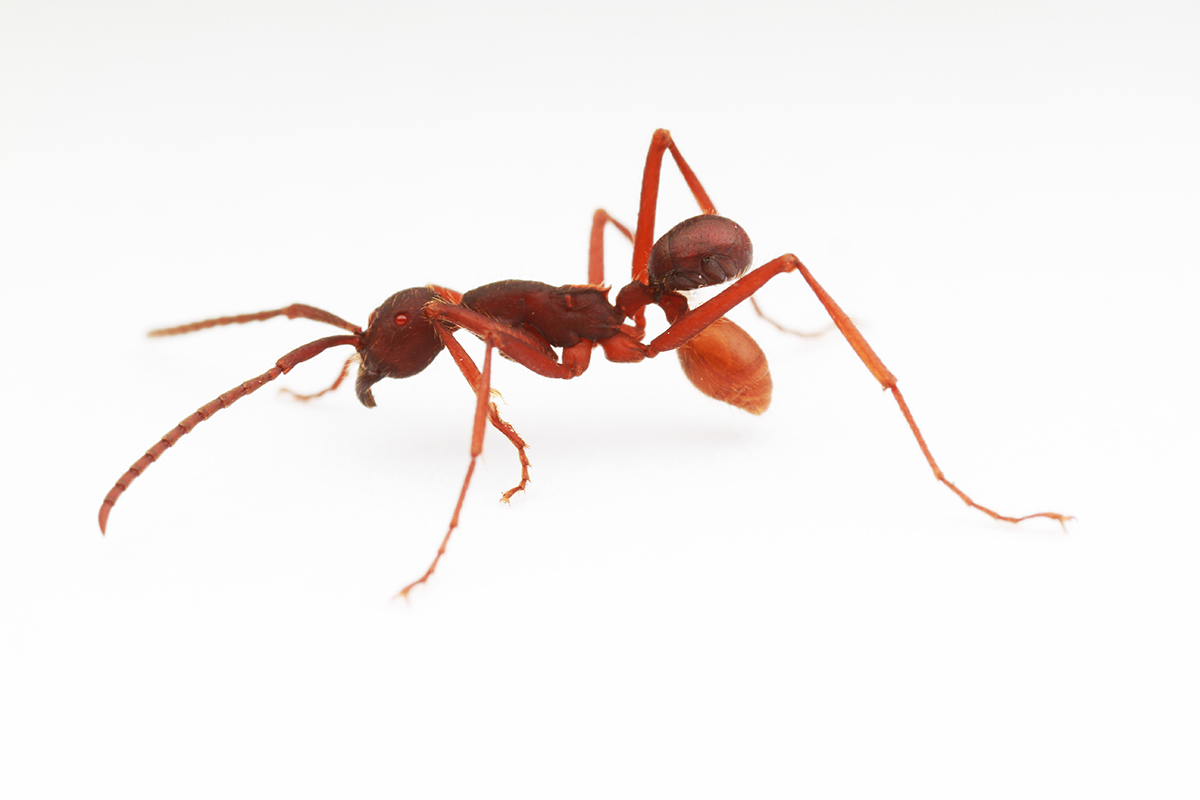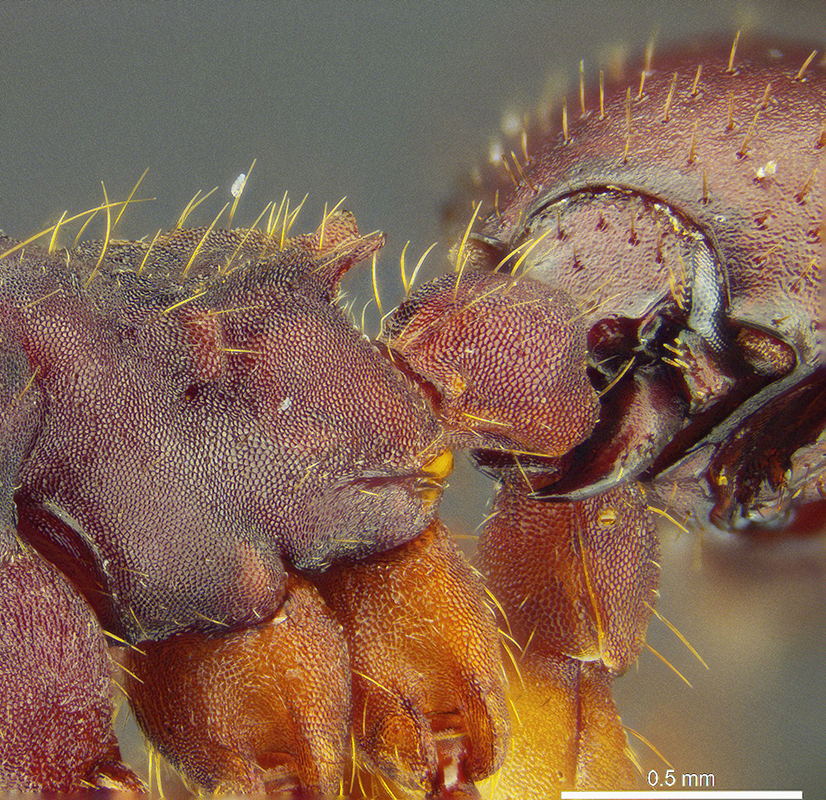Beetles Pose as an Ant's Butt to Grab a Ride

How do you hitch a ride on an army ant? Try masquerading as an ant butt. At least, that's the strategy that seems to work for the newly described beetle species Nymphister kronaueri.
Seen from above, a colony of Eciton mexicanum army ants marching across the forest floor looked perfectly normal to researchers surveying the insects in Costa Rica. But viewed from the side, many of the ants appeared to have a little extra junk in the trunk, sporting what seemed to be two abdomens stacked on top of each other, the scientists reported in a new study.
Closer inspection revealed that the topmost "abdomen" was actually a tiny hitchhiker — a beetle species unknown to science, holding on tight with its mandibles and perfectly camouflaged to resemble the rear end of the ant it clung to. [Cool Close-Up Photos Show Ants of the World]
Unlike most known ant species, army ants don't build permanent nests. Instead, vast colonies that can number in the tens of thousands travel as a group between temporary nest sites known as "bivouacs," which are constructed around the queen and larvae from the living bodies of worker ants.
Army ants in the Eciton genus that live in neotropical habitats are typically stationary for three weeks and migratory for two weeks, moving to a new nest site every night during their migratory phase — a process that can take up to 9 hours, the study's lead author and ecologist Christoph von Beeren, a postdoctoral researcher with the Technical University Darmstadt in Germany, told Live Science in an email.
Army ants hunt insects and other arthropods, such as spiders, mites and millipedes. But many types of arthropod species known as myrmecophiles, or "ant lovers," have come to depend on ants for survival, living off their garbage scraps or hiding within ant colonies as protection from other predators. To keep up with migrating army ants, some "ant lover" species — including many types of beetles — use the ants themselves as a taxi service, stowing away on workers or larvae, von Beeren said.
Von Beeren and study co-author Daniel Kronauer, who traveled to Costa Rica to investigate army ants and associated species, discovered the beetle as they were puzzling over what appeared to be an army ant with two abdomens that they had captured in a vial. And then suddenly, the hidden rider revealed itself.
Get the world’s most fascinating discoveries delivered straight to your inbox.
"When we shook the vial the beetle detached and expanded its legs and antennae — that is the moment we realized we had discovered something new here," von Beeren said.
The stealthy and highly specialized beetle N. kronaueri associates exclusively with one army ant species — E. mexicanum — and attaches only to medium-size worker ants, the researchers discovered. Its long mandibles are used like a pair of pliers, grasping the ant between its petiole — essentially the ant's "waist" — and a wider knob at the top of the abdomen.
Much like the ants it rides, N. kronaueri is shiny and reddish brown in color, and is about the same size and shape as an ant abdomen, which could explain how it can ride atop them and stay unharmed by the colony. Arthropods that coexist with ants fool their hosts into accepting them with chemical signals or physical mimicry — or both — but not enough is yet known about this new beetle species to tell for sure how it succeeds at tricking ants into accepting it as a passenger, von Beeren told Live Science.
The beetle's highly effective camouflage could also explain why the species was only recently discovered by scientists. Though army ants have been extensively studied, this conspicuous yet overlooked hitchhiker serves as an important reminder of how much is yet to be learned about ants — and the insects that are along for the ride, the researchers noted.
The findings were published online today (Feb. 9) in the open access journal BMC Zoology.
Original article on Live Science.

Mindy Weisberger is a science journalist and author of "Rise of the Zombie Bugs: The Surprising Science of Parasitic Mind-Control" (Hopkins Press). She formerly edited for Scholastic and was a channel editor and senior writer for Live Science. She has reported on general science, covering climate change, paleontology, biology and space. Mindy studied film at Columbia University; prior to LS, she produced, wrote and directed media for the American Museum of Natural History in NYC. Her videos about dinosaurs, astrophysics, biodiversity and evolution appear in museums and science centers worldwide, earning awards such as the CINE Golden Eagle and the Communicator Award of Excellence. Her writing has also appeared in Scientific American, The Washington Post, How It Works Magazine and CNN.



